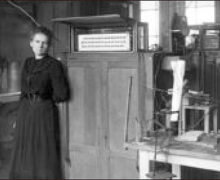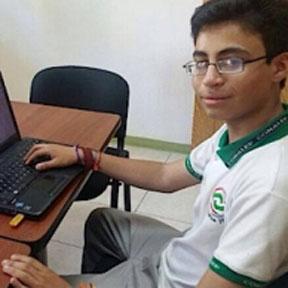
Las Catacumbas de París
The Paris Catacombs
En los meandros subterráneos de París, en contraposición al frenesí superficial de la vida cotidiana, se despliega un escenario que desafía las nociones convencionales del tiempo y la memoria. Las Catacumbas de París, un laberinto oscuro de túneles subterráneos, se alzan como un monumento macabro y fascinante que invita a reflexionar sobre la condición humana y la transitoriedad de la existencia. Este vasto catafalco, que alberga los despojos de millones de individuos, no solo es un recordatorio lúgubre de la historia de París, sino también una oportunidad para sumergirse en la filosofía de la mortalidad.
El origen de las catacumbas se remonta al siglo XVIII, en medio de una crisis de salud pública que asolaba la ciudad. Los cementerios, saturados y en estado de descomposición, constituían un caldo de cultivo para enfermedades. En un acto audaz y pragmático, en 1786 se decidió trasladar los restos humanos a las antiguas canteras de piedra caliza que se hallaban bajo la urbe. Este proceso de transferencia, llevado a cabo con una mezcla de respeto y eficiencia, transformó las cavernas subterráneas en un osario monumental, donde los huesos se disponen meticulosamente, desafiando así la concepción convencional de la muerte como un evento aterrador.
Las catacumbas, más que un simple cementerio, se convierten en un museo de la historia humana, donde los huesos yacen como testimonio de un pasado que se niega a ser olvidado. Cada cráneo, cada fémur, cuenta una historia, cada nicho y cámara revela un fragmento de la narrativa parisina. Al sumergirse en este inframundo, la luz del día se desvanece y el silencio se vuelve abrumador. Luces tenues proyectan sombras danzantes sobre las paredes de piedra, mientras el eco de los pasos propios resuena en la vastedad subterránea. Es un espacio donde el tiempo parece congelarse, invitando a reflexionar sobre la fugacidad de la existencia y la constante presencia de la muerte.
Además de su función como lugar de reposo final, las catacumbas han sido testigos de episodios más oscuros y enigmáticos. Durante la Revolución Francesa, se dice que sirvieron como refugio y punto de encuentro para revolucionarios, mientras que las leyendas urbanas sugieren la existencia Pág2
de pasadizos donde los visitantes pueden perderse para siempre. Estas historias añaden una capa adicional de misterio y reflexión sobre la naturaleza humana y la fragilidad de las instituciones sociales.
A pesar de su atmósfera sombría, las catacumbas de París atraen a miles de visitantes cada año, ávidos de experimentar la convergencia entre historia, arte y filosofía de la muerte. Los turistas, como alumnos en busca de conocimiento, recorren los senderos marcados, cautivados por la belleza macabra y la profundidad existencial que impregna estas galerías subterráneas.
En conclusión, las catacumbas de París no son meramente un lugar de descanso para los muertos, sino un espejo que refleja la condición humana y sus inquietudes filosóficas más profundas. En este reino subterráneo, donde la muerte y la historia se entrelazan en una danza eterna, los visitantes tienen la oportunidad de confrontar su propia mortalidad y reflexionar sobre el significado de la vida y la muerte.
In the underground meanderings of Paris, in contrast to the superficial frenzy of everyday life, a scenario unfolds that challenges conventional notions of time and memory. The Catacombs of Paris, a dark labyrinth of underground tunnels, stand as a macabre and fascinating monument that invites us to reflect on the human condition and the transience of existence. This vast catafalque, which houses the remains of millions of individuals, is not only a grim reminder of the history of Paris, but also an opportunity to immerse yourself in the philosophy of mortality.
The origin of the catacombs dates back to the 18th century, in the midst of a public health crisis that devastated the city. The cemeteries, saturated and in a state of decomposition, constituted a breeding ground for diseases. In a bold and pragmatic act, in 1786 it was decided to move the human remains to the old limestone quarries that were under the city. This transfer process, carried out with a mix of respect and efficiency, transformed the underground caverns into a monumental ossuary, where bones are meticulously arranged, thus challenging the conventional conception of death as a terrifying event. Page2
The catacombs, more than a simple cemetery, become a museum of human history, where bones lie as testimony to a past that refuses to be forgotten. Each skull, each femur, tells a story, each niche and chamber reveals a fragment of the Parisian narrative. As you plunge into this underworld, daylight fades and the silence becomes overwhelming. Dim lights cast dancing shadows on the stone walls, while the echo of one’s footsteps resonates in the underground vastness. It is a space where time seems to freeze, inviting us to reflect on the transience of existence and the constant presence of death.
In addition to their function as a final resting place, the catacombs have witnessed darker and more enigmatic episodes. During the French Revolution, they are said to have served as a refuge and meeting point for revolutionaries, while urban legends suggest the existence of passageways where visitors can get lost forever. These stories add an additional layer of mystery and reflection on human nature and the fragility of social institutions.
Despite their somber atmosphere, the Paris catacombs attract thousands of visitors each year, eager to experience the convergence of history, art and the philosophy of death. Tourists, like students in search of knowledge, walk the marked trails, captivated by the macabre beauty and existential depth that permeates these underground galleries.
In conclusion, the catacombs of Paris are not merely a resting place for the dead, but a mirror that reflects the human condition and its deepest philosophical concerns. In this subterranean realm, where death and history intertwine in an eternal dance, visitors have the opportunity to confront their own mortality and reflect on the meaning of life and death.
























